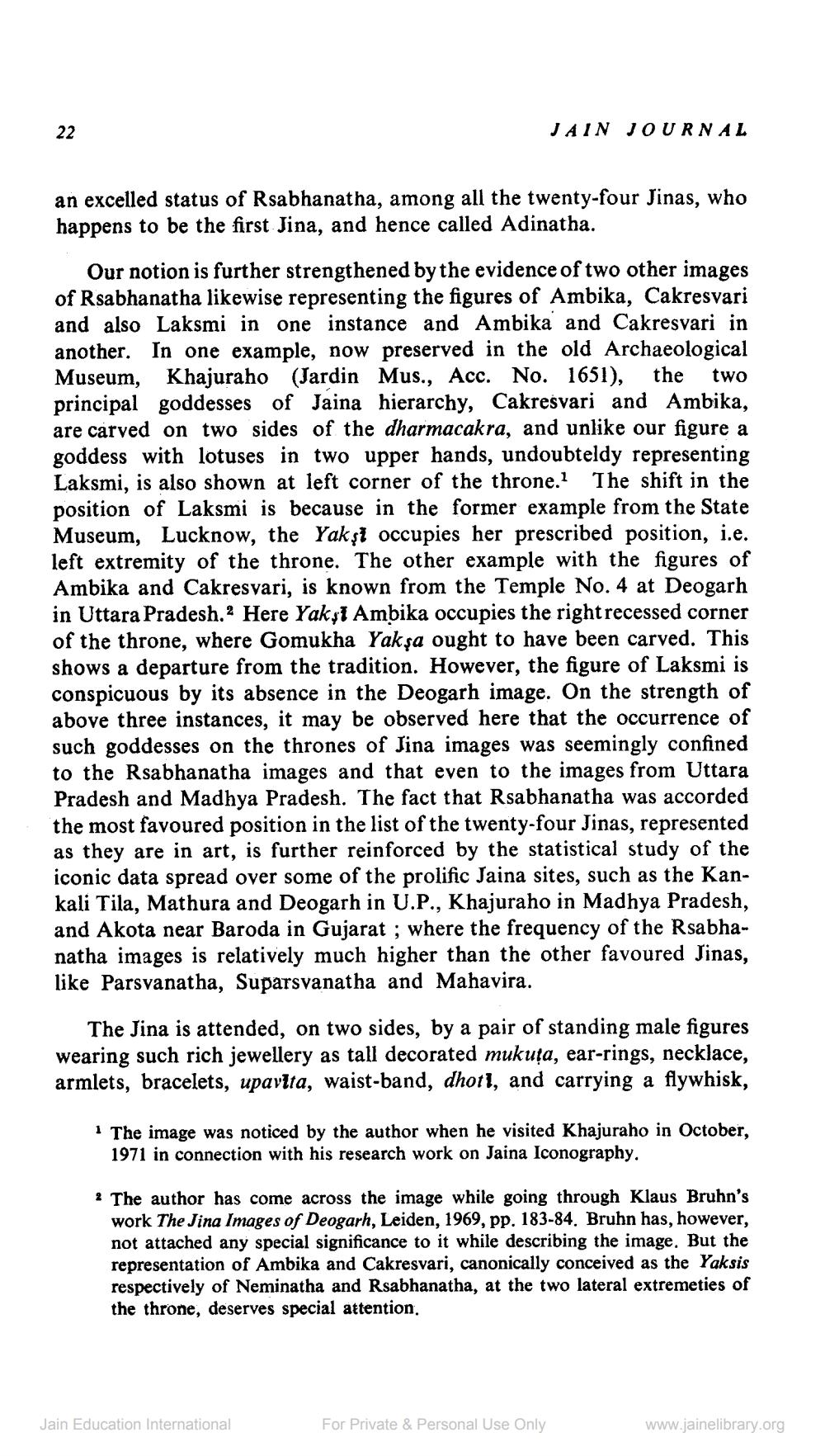________________
22
an excelled status of Rsabhanatha, among all the twenty-four Jinas, who happens to be the first Jina, and hence called Adinatha.
JAIN JOURNAL
Our notion is further strengthened by the evidence of two other images of Rsabhanatha likewise representing the figures of Ambika, Cakresvari and also Laksmi in one instance and Ambika and Cakresvari in another. In one example, now preserved in the old Archaeological Museum, Khajuraho (Jardin Mus., Acc. No. 1651), the two principal goddesses of Jaina hierarchy, Cakresvari and Ambika, are carved on two sides of the dharmacakra, and unlike our figure a goddess with lotuses in two upper hands, undoubteldy representing Laksmi, is also shown at left corner of the throne.1 The shift in the position of Laksmi is because in the former example from the State Museum, Lucknow, the Yakst occupies her prescribed position, i.e. left extremity of the throne. The other example with the figures of Ambika and Cakresvari, is known from the Temple No. 4 at Deogarh in Uttara Pradesh. Here Yaksi Ambika occupies the right recessed corner of the throne, where Gomukha Yakşa ought to have been carved. This shows a departure from the tradition. However, the figure of Laksmi is conspicuous by its absence in the Deogarh image. On the strength of above three instances, it may be observed here that the occurrence of such goddesses on the thrones of Jina images was seemingly confined to the Rsabhanatha images and that even to the images from Uttara Pradesh and Madhya Pradesh. The fact that Rsabhanatha was accorded the most favoured position in the list of the twenty-four Jinas, represented as they are in art, is further reinforced by the statistical study of the iconic data spread over some of the prolific Jaina sites, such as the Kankali Tila, Mathura and Deogarh in U.P., Khajuraho in Madhya Pradesh, and Akota near Baroda in Gujarat; where the frequency of the Rsabhanatha images is relatively much higher than the other favoured Jinas, like Parsvanatha, Suparsvanatha and Mahavira.
The Jina is attended, on two sides, by a pair of standing male figures wearing such rich jewellery as tall decorated mukuta, ear-rings, necklace, armlets, bracelets, upavita, waist-band, dhot1, and carrying a flywhisk,
1 The image was noticed by the author when he visited Khajuraho in October, 1971 in connection with his research work on Jaina Iconography.
2 The author has come across the image while going through Klaus Bruhn's work The Jina Images of Deogarh, Leiden, 1969, pp. 183-84. Bruhn has, however, not attached any special significance to it while describing the image. But the representation of Ambika and Cakresvari, canonically conceived as the Yaksis respectively of Neminatha and Rsabhanatha, at the two lateral extremeties of the throne, deserves special attention.
Jain Education International
For Private & Personal Use Only
www.jainelibrary.org




